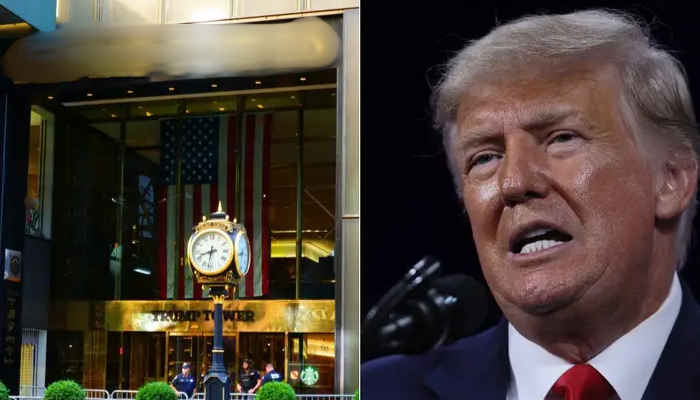The Trump Miami development approval has reignited national conversations around luxury real estate, politics, and urban growth. As Donald Trump’s real estate empire continues to expand, the approval of a new development in Miami marks a bold and controversial chapter in South Florida’s evolution. This move is poised to reshape the Miami skyline while also drawing attention from local leaders, investors, and critics alike.
In this article, we explore the major aspects of the Trump Miami development approval—from the planning phase to the potential economic and environmental consequences. Whether you’re a real estate enthusiast, a political observer, or a Miami resident, this in-depth guide provides valuable insight into one of the most talked-about developments in recent years.
Background of the Trump Miami Development
The Trump Organization has long had its eye on the South Florida real estate market. Over the years, Miami has become synonymous with luxury high-rises, waterfront properties, and international investment appeal. Donald Trump’s past ventures in Florida, such as Trump Grande in Sunny Isles Beach, laid the groundwork for future expansion. With this new Trump Miami development approval, the organization aims to solidify its brand presence in one of the most desirable markets in the U.S.
The approved project is expected to feature a mixed-use design, combining ultra-luxury condominiums, hotel accommodations, retail space, and even a private marina. While early details remain confidential, city records confirm that the proposal met zoning, height, and environmental standards, triggering official approval by Miami’s planning and zoning board in 2025. Trump’s name alone adds significant weight to the project’s visibility and influence.
Details of the Approved Project
The Trump Miami development is proposed to span several acres of prime coastal real estate. Located near Biscayne Bay, the project includes multiple 40+ story towers featuring ocean-view penthouses, designer interiors, and eco-conscious infrastructure. Plans also include luxury shopping spaces, five-star restaurants, wellness centers, and green public areas, making it not just a residential hub but also a tourist and commercial attraction.
City officials stated that the project would bring an estimated $1.2 billion in construction value to the area. The design was reportedly inspired by contemporary Mediterranean architecture and includes energy-efficient building materials to comply with Florida’s updated sustainability guidelines. By embracing both luxury and environmental responsibility, the development is aiming to appeal to affluent domestic and international buyers.
Political and Public Reactions
The Trump Miami development approval has sparked significant political debate. Supporters praise the project for its economic potential and job creation, with projections suggesting over 5,000 construction and hospitality jobs. Proponents argue that this development will boost tourism, attract foreign investment, and improve Miami’s global status as a luxury destination.
However, critics raise concerns over political favoritism, environmental risks, and long-term community displacement. Given Trump’s polarizing reputation, some advocacy groups have accused local officials of fast-tracking the approval process. Public hearings in early 2025 saw large turnouts both for and against the project. While the city maintains that all procedures were followed transparently, the controversy has drawn nationwide media attention and scrutiny.
Economic Impact on Miami’s Real Estate Market
The approval of a major Trump-backed project could have lasting implications for Miami’s real estate landscape. Experts suggest that the Trump Miami development approval may drive up nearby property values, as luxury projects often signal a neighborhood’s prestige and investment potential. Analysts predict a ripple effect, with developers and buyers rushing to secure adjacent parcels of land.
Furthermore, the influx of luxury condos and retail space will likely increase competition among existing developments. While this could drive innovation and higher building standards, it may also price out middle-income residents. Miami already ranks among the least affordable housing markets in the country, and a Trump-branded mega-project may further widen the economic gap if proper affordable housing strategies aren’t enforced.
Environmental Considerations and Legal Challenges
South Florida is especially vulnerable to rising sea levels, hurricanes, and coastal erosion. Environmental groups have expressed concern over the potential impact of the Trump Miami development on the fragile ecosystem. The project site lies near protected mangrove areas and wetland zones, which serve as natural buffers against storms and flooding. Critics argue that large-scale construction could disrupt marine life and threaten biodiversity.
To comply with state regulations, developers submitted an environmental impact report that claims the project includes seawall enhancements, mangrove replanting, and drainage improvements. Despite this, several lawsuits have been filed by environmental watchdogs, calling for further assessments and transparency. If any of these legal challenges succeed, they could delay or significantly alter the construction timeline.
Conclusion:
The Trump Miami development approval represents more than just another luxury project—it’s a test of how politics, wealth, environment, and community interests intersect in one of America’s fastest-growing cities. With vast economic potential and equally sizable controversy, this development will continue to shape debates around urban planning and sustainable growth in South Florida.
Whether it becomes a beacon of innovation or a symbol of misplaced priorities remains to be seen. One thing is certain: all eyes are on Miami, as the Trump Organization prepares to break ground on what could become one of its most ambitious developments to date.
FAQs
1. What is the Trump Miami development project?
It’s a newly approved luxury real estate development by the Trump Organization in Miami, featuring condos, hotel space, and commercial areas.
2. When was the project officially approved?
The Miami city council granted approval for the development in early 2025.
3. Where will the development be located?
The project is set to rise near Biscayne Bay, in a prime waterfront district of Miami.
4. How big is the Trump Miami development?
It spans several acres and will include multiple high-rise towers and mixed-use spaces.
5. What is the estimated cost of the development?
The projected construction value is around $1.2 billion.
6. Will the development include any eco-friendly features?
Yes, the proposal includes green building materials, seawall upgrades, and mangrove restoration plans.
7. What are some concerns raised by local residents?
Concerns include environmental impact, gentrification, political favoritism, and legal transparency.
8. How many jobs will the project create?
It’s expected to create over 5,000 temporary and permanent jobs in construction and hospitality.
9. Is there any legal opposition to the project?
Yes, environmental groups have filed lawsuits to challenge the development on ecological grounds.
10. When is construction expected to begin?
If legal delays are avoided, construction is expected to start in late 2025 or early 2026.



